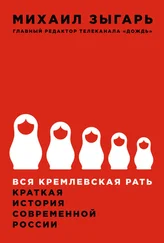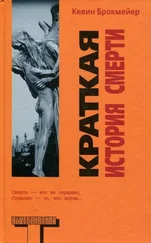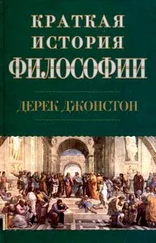«Неопалимый Вебер» служит источником вдохновения для очерка Карлоса Эйре, обыгрывающего обсуждение Скрибнером «неопалимого Лютера» – изображений богослова, которые считались неуязвимыми для пламени. См.: C. M. N. Eire . Incombustible Weber: How the Protestant Reformation Really Disenchanted the World // A. Sterk and N. Caputo (eds.). Historians, Religion, and the Challenge of Objectivity. New York: Cornell University Press, 2014, ch. 8.
R. Scribner . Reformation, Popular Magic and the Disenchantment of the World // Journal of Interdisciplinary History 23 (1993): 475–494; R. Scribner . Popular Culture and Popular Movements in Reformation Germany. London: Hambledon, 1987, pp. xii – xiv; Scribner . Reformation and Desacralisation, p. 76; Scribner . Reformation, Popular Magic, and the Disenchantment of the World, p. 483; Scribner . Reformation and Desacralisation, pp. 77–78.
R. Scribner . Incombustible Luther: The Image of the Reformer in Early Modern Germany // Past and Present 100 (1986): 36–68.
Необходимо помнить о том, что расколдовывание мира охватывало отнюдь не всех людей, но от этого оно не становится менее значимым в интеллектуальной истории человечества и не утрачивает характер действительного процесса. Незнание множеством людей высшей математики не служит доказательством ее несущественности или вообще небытия. Иными словами, сохранение предрассудков не отменяло открытия вымышленного характера сверхъестественного.
C. S. Dixon . The Reformation and Rural Society: The Parishes of Brandenburg-Ansbach-Kulmbach, 1528–1603. Cambridge: Cambridge University Press, 2002, pp. 173–174.
E. Duffy . Stripping of the Altars: Traditional Religion in England c.1400–c. 1580. New Haven, CT, and London: Yale University Press, 1993, pp. 136–138, 578; Thomas . Religion and the Decline of Magic, pp. 71–74.
R. C. Finucane . Miracles and Pilgrims: Popular Beliefs in Medieval England. London: J. M. Dent, 1977, ch. 12; H. L. Parish . Monks, Miracles and Magic: Reformation Representations of the Medieval Church. London and New York: Routledge, 2005, pp. 79–81; T. F. Mayer . Becket’s Bones Burnt! Cardinal Pole and the Invention and Dissemination of an Atrocity // T. S. Freeman and T. F. Mayer (eds.). Martyrs and Martyrdom in England, c. 1400–1700. Woodbridge: Boydell & Brewer, 2007, pp. 126–143; T. Wright (ed.). Three Chapters of Letters Relating to the Suppression of the Monasteries, 1st series, 26. London: Camden Society, 1843, pp. 219–221.
Мария I Тюдор (1516–1558) – королева Англии и Ирландии с 1553 г., при которой произошла кратковременная реставрация католичества в стране. За казни протестантов Мария получила прозвание Кровавой.
Джон Донн (1572–1631) – английский поэт. Цитируется строка из его сатиры «Адвокат-стяжатель» (winds in our ruin’d Abbey rore). См.: Донн Д. Избранное из его элегий, песен и сонетов, сатир, эпиталам и посланий в переводе Г. Кружкова с добавлением гравюр, портретов, нот и других иллюстраций, а также с предисловием и комментариями переводчика. М.: Московский рабочий, 1994. С. 90.
Цитируется 73-й сонет английского поэта и драматурга: Bare ruined choirs, where late the sweet birds sang.
H. Robinson (ed.). The Zurich Letters, Comprising the Correspondence of Several English Bishops and Others, with some of the Helvetian Reformers, During the Early Part of the Reign of Queen Elizabeth. Cambridge: Parker Society, 1842, p. 44; A. Walsham . Skeletons in the Cupboard: Relics after the English Reformation // Past Present 206 (suppl. 5) (2010): 121–43; M. Aston . English Ruins and English History: The Dissolution and the Sense of the Past // Journal of the Warburg and Courtauld Institutes 36 (1973): 231–255; E. Shagan . Popular Politics and the English Reformation. Cambridge: Cambridge University Press, 2002; A. Spicer and W. Coster (eds.). Sacred Space in Early Modern Europe. Cambridge: Cambridge University Press, 2005.
M. Huggarde . The displaying of the Protestantes, and sondry of their practises, with a description of divers their abuses of late frequented within their malignaunte churche. London, 1556, fos 54–55; J. Foxe . Acts and Monuments. London, 1570, pp. 2196–2197.
L. Razzall . “A good Booke is the pretious life-blood of a master-spirit”: Recollecting Relics in Post-Reformation English Writing // Journal of the Northern Renaissance 2, no. 1 (2010): 93–110.
A. Walsham . Jewels for Gentlewomen: Religious Books as Artefacts in Late Medieval and Early Modern England // R. N. Swanson (ed.). The Church and the Book. Woodbridge: Boydell & Brewer, pp. 123–142.
D. Lowenthal . The Past is a Foreign Country. Cambridge: Cambridge University Press, 1985, pp. 238–259; J. Fentress and C. Wickham . Social Memory. Oxford: Oxford University Press, 1992.
Scribner . The Reformation, Popular Magic, and the Disenchantment of the World, pp. 475–494; Scribner . Reformation and Desacralisation, pp. 75–92; A. Walsham . Introduction: Relics and Remains // Past and Present 206 (suppl. 5) (2010): 9–36; U. Rublack . Grapho-Relics: Lutheranism and the Materialization of the Word // Past and Present 206 (suppl. 5) (2010): 144–166; Walsham . Skeletons in the Cupboard, pp. 121–143.
D. Woolf . The Social Circulation of the Past: English Historical Culture 1500–1730. Oxford: Oxford University Press, 2003.
Это представление создавало предпосылки для полного исключения мира мертвых из научной картины мира. Мир мертвых существует лишь в сознании людей.
Thomas . Religion and the Decline of Magic, p. 703.
P. Marshall . Beliefs and the Dead in Reformation England. Oxford: Oxford University Press, 2002, p. 245.
R. Scot . Discoverie of Witchcraft, London, pp. 152–153.
Читать дальше
![Хелен Пэриш Краткая история: Реформация [litres] обложка книги](/books/389963/helen-perish-kratkaya-istoriya-reformaciya-litres-cover.webp)
![Юваль Ной Харари - Sapiens. Краткая история человечества [litres]](/books/34310/yuval-noj-harari-sapiens-kratkaya-istoriya-cheloveche-thumb.webp)




![Джон Херст - Краткая история Европы [litres]](/books/389962/dzhon-herst-kratkaya-istoriya-evropy-litres-thumb.webp)
![Пол Стретерн - Расцвет и падение [Краткая история 10 великих империй] [litres]](/books/390297/pol-stretern-rascvet-i-padenie-kratkaya-istoriya-10-thumb.webp)
![Джон Норвич - Краткая история Франции [litres]](/books/400778/dzhon-norvich-kratkaya-istoriya-francii-litres-thumb.webp)
![Уильям Байнум - Краткая история науки [litres]](/books/412489/uilyam-bajnum-kratkaya-istoriya-nauki-litres-thumb.webp)
![Стивен Хокинг - Краткая история времени. От Большого взрыва до черных дыр [litres]](/books/416997/stiven-hoking-kratkaya-istoriya-vremeni-ot-bolshogo-thumb.webp)
![Мартин Буркхардт - Краткая история цифровизации [litres]](/books/435614/martin-burkhardt-kratkaya-istoriya-cifrovizacii-lit-thumb.webp)
